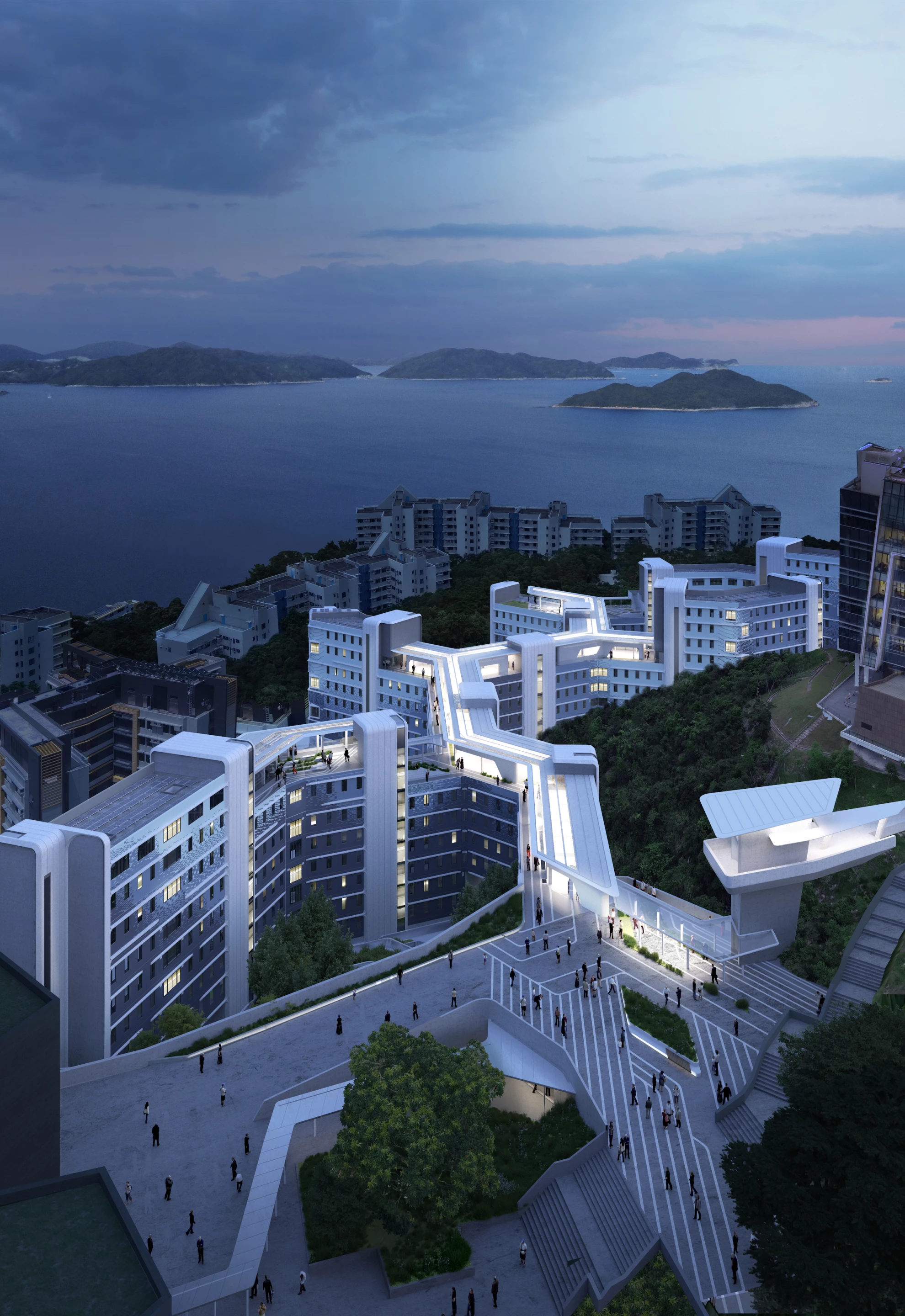Zaha Hadid Architects (ZHA), in collaboration with local firm Leigh & Orange, has unveiled its design for new student residences in Hong Kong. Due for completion in 2023, the development will incorporate rooftop walkways and overcome a tricky hillside site.
The project will be part of the Hong Kong University of Science and Technology (HKUST) and will host over 1,500 students. Its overall design has been informed by the challenging site, with ZHA using BIM (Building Image Modeling) and 3D simulations to calculate everything from the terrain and the view, to soil conditions and natural light inside.
"Located at the southeast of the HKUST campus, the new halls of residence are embedded within a steeply sloping site of approximately 25 m [82 ft] of level difference," explains ZHA, which has produced some of its most notable works in China recently. "The building's roof line has been designed as its primary circulation and incorporates shaded outdoor areas for students and staff to rest and gather together, helping to build a stronger cross-campus culture. This rooftop walkway creates a new connection between the academic blocks of the north campus and the primarily residential blocks of the south, eliminating the need for students and staff to circumnavigate the hilly terrain."

The project will be arranged in a hexagonal layout, creating four courtyards conceived as quiet spaces for rest and relaxation. The residences themselves are arranged in three different cluster types. The Y configuration will house 27 students and allow them access to study areas, a lounge and kitchen. The V clusters will be home to 36 students in a split-level arrangement, again with communal and kitchen areas. And finally, Linear apartments for 18 students will include open plan areas that can be partitioned as needed.
An energy-efficient seawater-cooled chilling system will be used to cool the interiors, while solar panels will be installed on the non-walkable sections of the rooftops as as part of a larger effort by the university to eventually reach carbon-neutral operation.
Additionally, the building will feature several prefabricated elements to speed up build time, including the facade, which will sport solar shading fins positioned above the windows to reduce solar heat gain. The hillside surrounding the project will be replanted in an attempt to prevent soil erosion too.
Source: Zaha Hadid Architects









